WHAT IS A VARIABLE STAR?
Variable stars are stars that seen from Earth experience a variation in brightness or fluctuation (apparent magnitude) over time. This variation can be caused by change in the emitted light or because something partially blocks the light, so variable stars are classified as follows:
-Intrinsic variables: whose luminosity really changes; for example, because the star periodically expands and contracts.
-Extrinsic variables: whose apparent changes in brightness are due to changes in the amount of light that can reach the Earth; for example because the star has an orbiting companion that sometimes eclipses it.
WHY DOES THE CHANGE IN BRIGHTNESS?
There are a number of reasons why variable stars change their brightness. In general it happens when the star is eithervery young or very old, which is when it didn't reach or lost its stability.
he different causes of light variation in variable stars provide guidance for classifying the stars into different categories. Variable stars are classified as intrinsic, when the variability is caused by physical changes, such as pulsations or eruptions in the star or stellar system or extrinsic, in the case that the variability is caused by the eclipse of one star by another, the transit of an extrasolar planet, or by the effects of stellar rotation.
HR2535

This is its energy spectrum from JS9 with its most importants energy peaks.
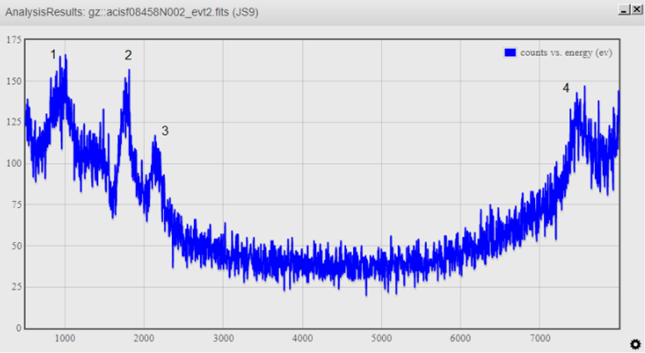
Then, I have calculated each peak's percentatge and find out which elements they contain.
I have used this formula:

-PEAK 1: 11395 mm2/ 115656 mm2 · 100 = 9,85 % (V) Vanadium
-PEAK 2: 8760 mm2/ 115656 mm2 · 100 = 7,54 % (Ga) Gallium
-PEAK 3: 5056 mm2 / 115656 mm2 · 100 = 4,37 % (As) Arsenic
-PEAK 4: 9589 mm2 / 115656 mm2 · 100 = 8,29 % (Eu) Europium
TOTAL AREA: 115656 mm2
(V) Vanadium: 9,85%
(Ga) Gallium: 7,54%
(As) Arsenic: 4,37%
(Eu) Europium: 8,29%
With the help of this website I was able to find out what element each peak corresponds to:
http://hyperphysics.phy-astr.gsu.edu/hbase/hyde.html#c4
VANADIUM
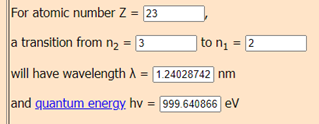
GALLIUM
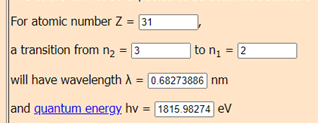
ARSENIC
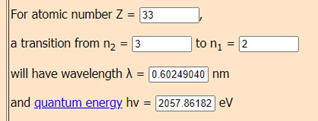
EUROPIUM
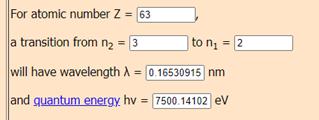
I have assumed that these peaks are the elements that I have indicated, but it may be that they aren't these and that it is incorrect because, in this case, the electrons jump from layer 3 to layer 2 and this means that the temperature has to be similar environmental, and therefore is low. But if we increase the layers, the electron volts go up, and for this reason it may be that my analysis is incorrect.
I compare my spectrum and results with others professional astronomers:
- My results with those of other scientists agree that this stellar object is made of vanadium, gallium,arsenic.
- In addition, I have found that this variable star is also formed by europium. I have tried searching more scientific articles on google schoolar to see if it, actually, contains these elements, but I have not found any more elements that constitute this variable star.
So I have opted to put these elements. Probably the one that is wrong is me, as they are scientists and have studied this before giving the result.